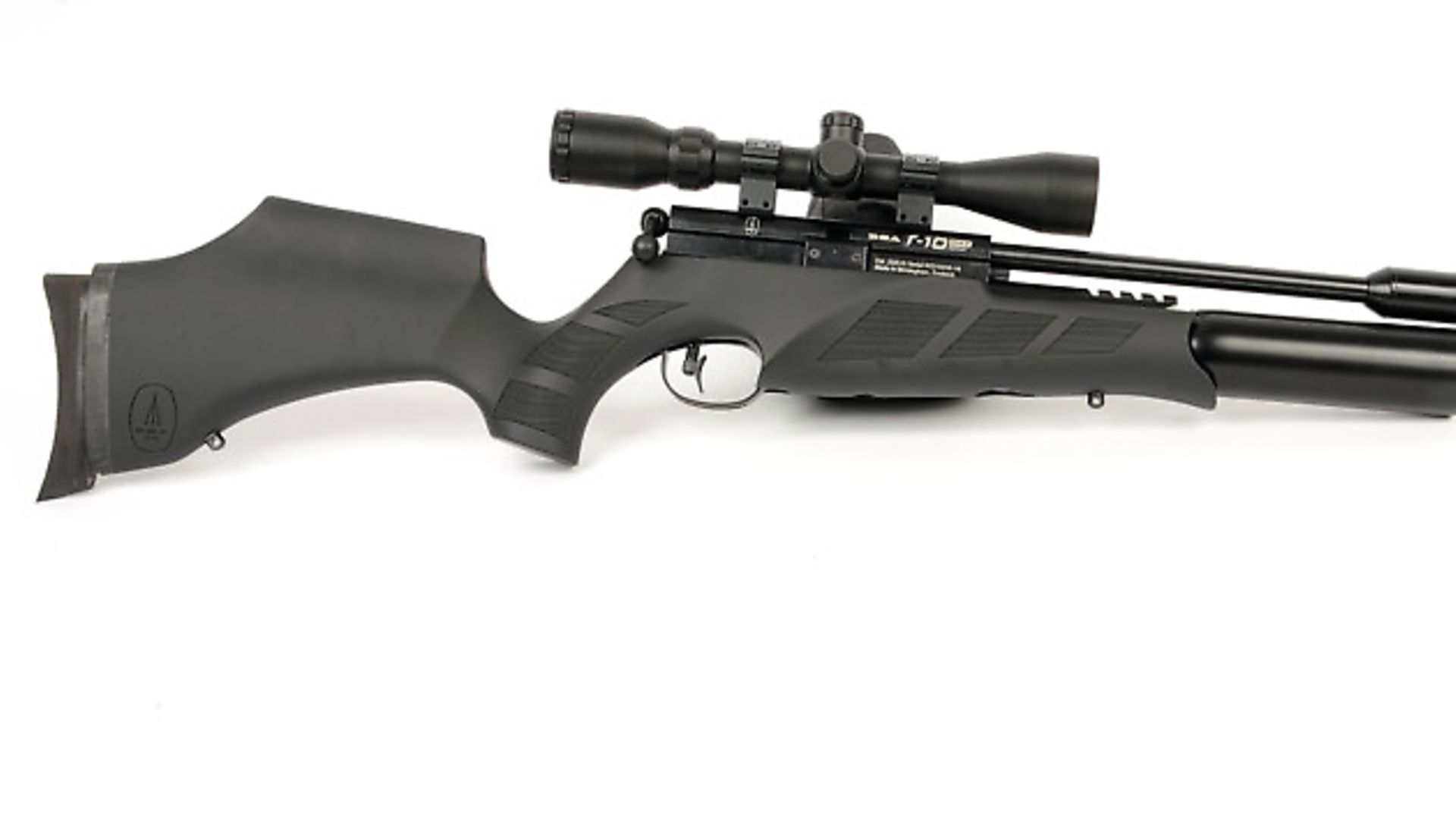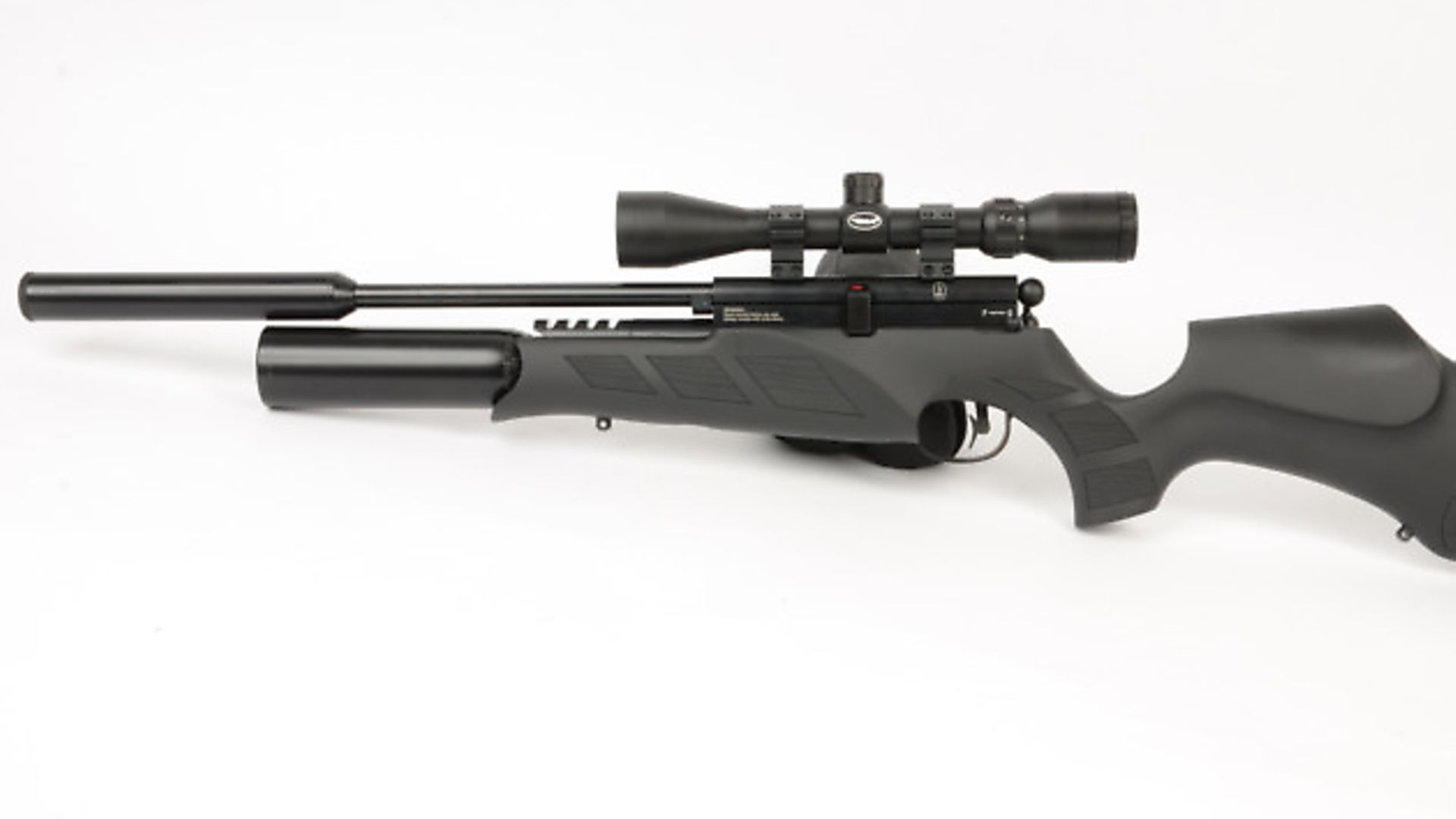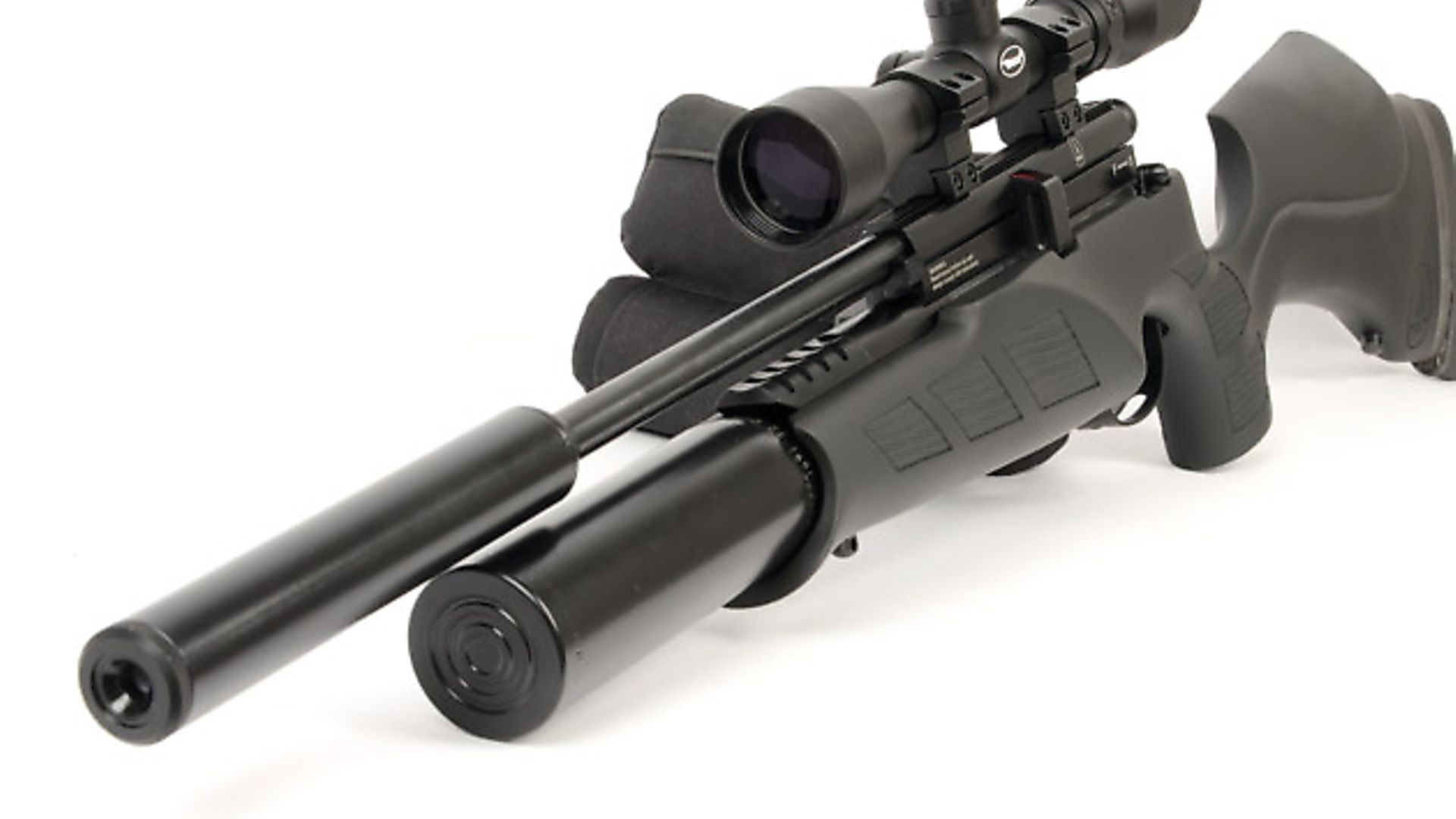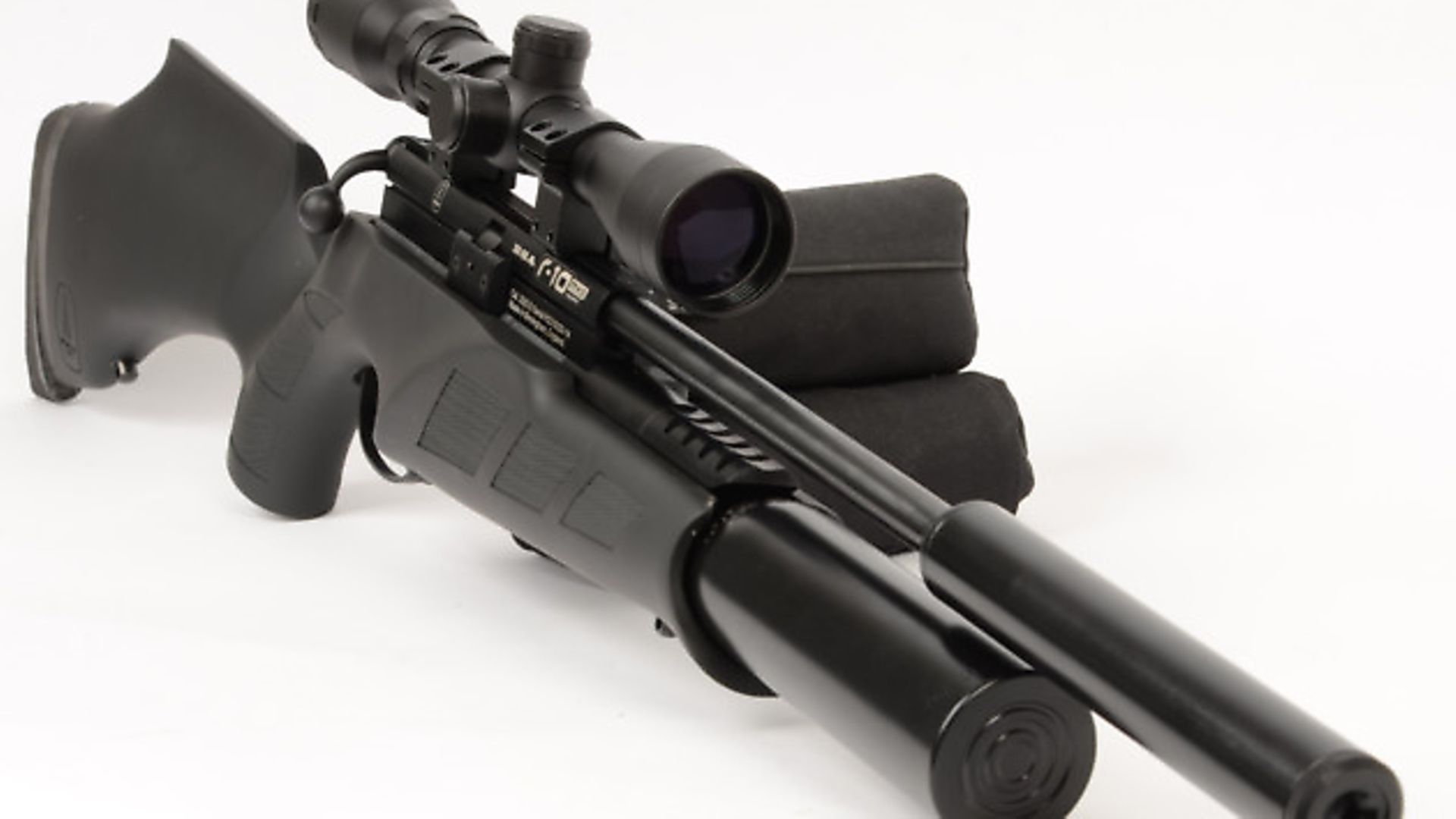BSA R-10 Super Compact Carbine
The latest version of the BSA flagship is offered as a special deal, as the editor tells us S credit: Archant I remember well the first time I laid eyes on a BSA R-10. I was bowled over by the bold styling and premium, oiled walnut stock because to my eyes it had supermodel looks
Would you like to appear on our site? We offer sponsored articles and advertising to put you in front of our readers. Find out more.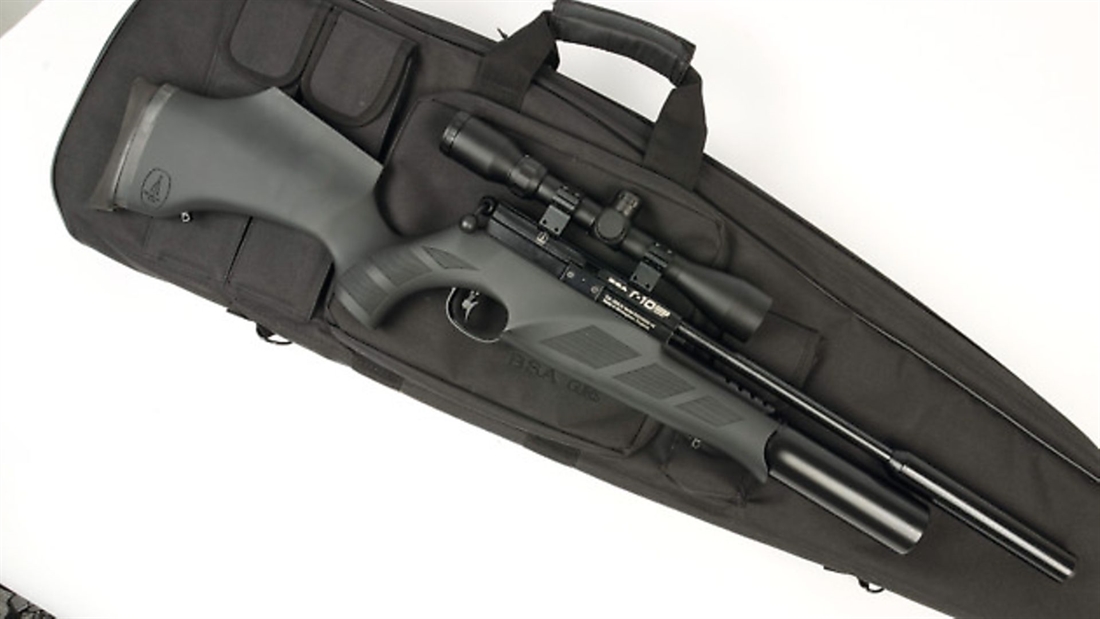
The latest version of the BSA flagship is offered as a special deal, as the editor tells us S
I remember well the first time I laid eyes on a BSA R-10. I was bowled over by the bold styling and premium, oiled walnut stock because to my eyes it had supermodel looks backed up with excellent handling. Pulling it into my shoulder, I was further impressed with the fit and feel. It was like slipping on a well-made glove as the pistol grip filled my palm, depositing the pad of my index finger precisely on the adjustable trigger blade. Wow! I suppose that over the years I’d associated BSA rifles with being more of a workhorse than a beauty star, but that gun changed my opinion in a second.
The stock was, and still is in my opinion, one of the best fitting you can buy. There are so many positives that they make a long list, but the highlights for me are the high cheekpiece and the excellent pistol grip. I guess I should get one of my bugbears out while I’m at it. I simply love the true right-hand layout rather than the increasingly common ambidextrous type. The latter is merely an average that excels at nothing, a jack of all trades, whereas the R-10’s stock uses every trick in the book to offer fit and support in all the right places.
Versatile
The drop to heel dimension is larger than many rifles, showing that BSA knows what we know, which is that the vast majority of shots are taken from standing, kneeling and sitting, with prone shots accounting for just a small number. This might seem as being too position specific, but BSA added a vertically adjustable butt pad, ensuring that you can get the optimum fit in any situation. The pad is quite soft and has A ribbed surface, so a reliable contact with your shoulder pocket is guaranteed. I know I’m rambling on about it, but believe me, this stock is pretty special.
The R-10 MK2 action looks much like the MK1 but after listening to its customers, the BSA engineers set about a huge list of small, but significant improvements to polish this already excellent gun further. It uses BSA’s latest magazine which has eliminated a glitch that troubled older models, and its tough build simply feels right. Because the face plate is metal, you can’t see how many pellets are inside, so BSA has stamped numbers into the outer edge of the rotary drum that show exactly what you have left. A reader recently told me that he uses a silver pen from WH Smith to highlight the numbers, making them easier to read: clever.
Another area I love about this gun is that the mag’ sits low in the action, meaning the scope rail is continuous for the full length, with no cut-outs or magazine projecting upward. This makes scope-fitting child’s play and eliminates many of the frustrating compromises that other pre-charged, multi-shot pneumatics suffer from. Any scope, any mounts will drop on in seconds with no hassle at all. The chunky bolt handle rides on a hard chrome-plated shaft that slides in a self-lubricating bushing for a smooth action and excellent durability. Inside the action you’ll find a regulator which accounts for some of the premium price this rifle commands. This ensures top class shot-to-shot consistency and eliminates the power curve many PCPs suffer, both of which increase the chance that you’ll hit with your first shot every time, which is what hunting guns are all about. The regulator takes air from the reservoir and delivers a set volume and pressure every time, regardless of the pressure in the reservoir tube. Without a reg’ the velocity will drop as the reservoir pressure reduces to its lowest working pressure, meaning long shots could well land lower than you were expecting.
Buddy Bottle
The R-10 uses a slim little buddy bottle yet offers well over 200 shots per fill, which seems incredible until your remember two facts. One: a regulated rifle uses its air frugally with little or no waste, making it more efficient than a non-regulated version. Second: The buddy bottle is engineered to accept 225 bar pressure, which is a lot higher than average and this increases the shot count with no additional weight penalty. Because the bottle is so slim and the fore end so long, most people will be holding wood not metal with their leading hand. This makes the rifle far more pleasant to shoot on a frosty, winter morning.
Out front there is one of BSA’s legendary hammer-forged barrels that are world renowned for their quality and accuracy. The hammer forging process is just what it sounds like; massive machines hammering the barrel onto a mandrill that has the rifling in it. Many people believe that this process gives a superior finish to the more common button-cut rifling that most other manufacturers use. Whatever the technical arguments are, there’s no question that these are some of the best barrels you can buy,
but with this gun you get a little less. In fact 3” less than the standard R-10, giving the Super Carbine its name. Even with the long, Variable Choke (VC) silencer fitted, the rifle only measures just over three feet, making it the perfect hide gun or one to use from the window of your 4 x 4. Despite its tiny size, the rifle still has enough heft to be stable on aim and reassuringly solid.
The Super Carbine is being offered as a complete package as you see it in the pictures. The stock has the rubberised tactical finish and it comes with a 3-9 x 40 mil-dot scope, mounts and a VC silencer. Finally you get one of BSA’s lovely Tactical gun slips that has thick padding and plenty of pockets for all your bits and bobs. Because it’s a package, the price of £799 gives a good saving over buying the components separately. In keeping with the tactical looks the bolt handle is matte black rather than the bright chrome finish you get with the walnut stock option. I’d also like to applaud BSA for fitting sling swivel studs as standard, because hunting guns need a sling: it’s as simple as that, and nobody likes taking a drill to a brand new gun. It’s far better to let the professionals do it at the factory.
In the field
All that technical detail is good to know, but not nearly as interesting as how the gun performs and how it handles in the field. Unsurprisingly, it feels compact yet surprisingly stable, something I attribute to the excellent stock. I made a couple of quick tweaks to the position of the trigger blade’s target-style shoe, and I felt ready to get some lead downrange. Starting from the bench, I zeroed the scope and set about shooting some groups with some pre-production samples of BSA’s new pellets, the Red Star and Blue Star. The Red Star is a long skirt, round head while the Blue Star has a conical head with a small flat that’s designed to increase the impact on quarry animals. Both performed well and cycled normally through the magazine. As ever I also shot the rifle with my standard test pellet, the Air Arms Field which I know very well. This allows me to get a good base measure of the gun’s performance. At 25 yards they were punching a one-hole group that measured little more than ¼” across which pleased me no end. I love an accurate rifle and this certainly is that. Next, I simply enjoyed hitting a range of knock-down and spinning targets at every distance with the help of the scope’s mil-dot reticle. Once you know the hold-over needed, repeating it is just so simple. I appreciated the thumb scoop in the back of the wrist that suited my thumb-up grip very well and encouraged a relaxed trigger release.
Confident that the set-up was spot-on, I took advantage of the longer days to go after some roosting pigeons. Deep in the heart of one of my woods, a tree has fallen which has had two effects. One is to give me a nice natural hide and the other is that the pigeons seem to like the new open space to fly into. I arrived a bit too early because I hadn’t realised just how late it was getting dark, and the sunny clear sky held on to the daylight much longer that I’d expected. Knowing the birds would be a while coming, I took the chance to practise my aim on a dead tree nearby. This allowed me to get familiar with the trajectory of the .22, because I’m a .177 guy every day. The crumbling wood showed the pellet’s impact very clearly, teaching me more with every shot.
Inside job
Being inside the hide soon showed the value of such a short gun, because it could easily have snagged on all sorts of twigs and branches, but with a little common sense I had no problems. I was also glad of the high shot count because I was having such fun that I fired an awful lot of pellets, yet still had plenty for my planned hunt. I managed to find a thick branch of the fallen tree to make a seat in a place where I still had a good view of the most popular roosting tree, so I got comfortable, waited, and wished that I’d remembered a cold drink, because the warm day had left me parched.
I kept my senses on full alert, waiting for that whistling noise that often lets you know the birds are coming before you hear them, and sure enough they started to drop in. It was still fully light so I needed to be extra stealthy in my movements and I really regretted not bringing a face veil and gloves. It always amazes me how often you can see a pigeon on final approach, only for it to disappear as it lands. Three landed, and I couldn’t see any of them, but at least they couldn’t have seen me or they’d have been off. I hoped that they’d act as decoys for more incoming birds. A few minutes later another landed and this one was in clear view, so I slipped the safety off and took aim, remembering the hold-under I’d learned earlier. Despite the R-10’s quiet report, the sound of the pellet smacking into the pigeon’s head soon had the other birds scattering. As darkness fell, I had four birds at my feet, the makings of a fine dinner, and a contented smile on my face.
I’ve been trying since then to describe the Super Carbine package and I guess it’s this: What you get is the high-tech, super performance R-10 MK2 wrapped in a tough exterior that you wouldn’t mind bumping and scratching, things you’d never do to the supermodel oiled walnut version – all at a bargain price.
Related articles
Watch: Red squirrel conservation with Mick Garvey
The latest version of the BSA flagship is offered as a special deal, as the editor tells us S credit: Archant I remember well the first time I laid eyes on a BSA R-10. I was bowled over by the bold st...
By Time Well Spent
Get the latest news delivered direct to your door
Subscribe to Airgun World



